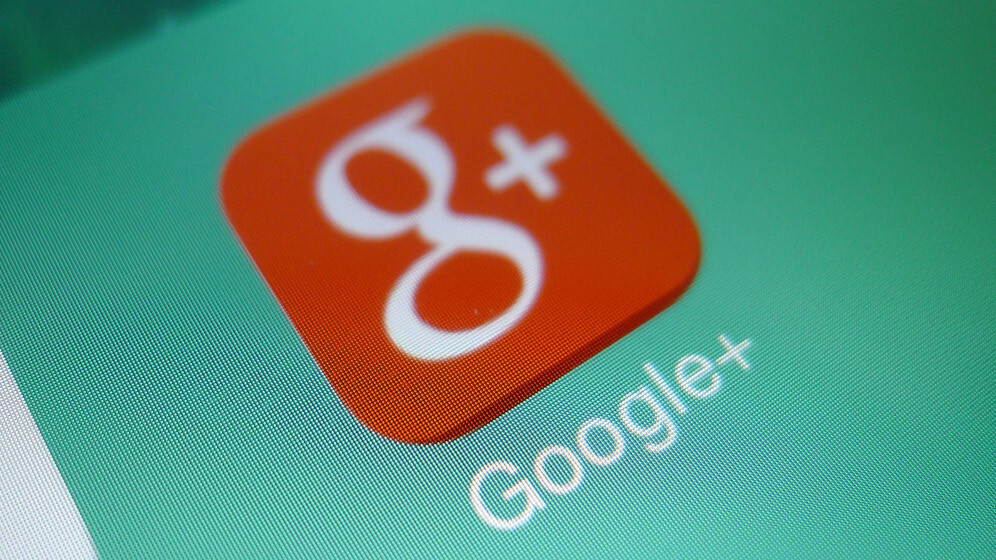
“Is Google+ a dead man walking?”
I asked the question in front of about two hundred marketers. The temperature in the room was high because we were in Hot’lanta at the Digital Summit, where I moderated a panel on the future of social and search.
About two thirds of marketers in the room raised their hands to proclaim farewell to Google+. I was among the minority that erred on a side to keep Google’s social network in their marketing mix.

Banksy Grim Reaper New York City via photopin (license)
Google hasn’t given up on Google+ – even though the tech media loves proclaiming Google+ dead – but the recent changes discussed here might be enough to spark a litany of predictions and click bites on the web. According to Mashable:
‘Google’s effort to build a social network to rival Facebook began with a bold, company-wide yell. Now Google appears to be winding down Google+ with barely a whimper.”
So, should marketers be spending their limited time and resources on Google+?
The answer is a resounding YES.
While Google’s aspirations for this social network have been reduced, Google+ is still one of the largest social networks and offers unique opportunities for marketers to gain visibility and increase profits.
For example, seasoned marketers know that almost every consumer check their email daily. Google+ allows you to email your Gmail followers with a click of the bottom – a featured unmatched by any other social network.
Your Google+ profile continues to be an important asset. If you own a business or care about your personal brand, there’s no question you need to be on Google+.
Neverthless, Google+ is always evolving and changing, and these changes can impact how you use it for your business.
So let’s take a look at five important changes in Google+ you should know about.
-
Unused/Unverified Google+ Pages Get Shut Down
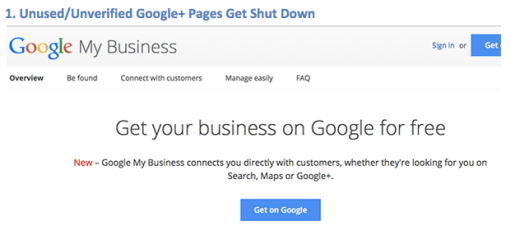
In June, 2014, Google began shutting down business pages that were unused or unverified with a Google+ account.
Shortly after, Google began pushing a rebranded service, Google My Business, which offers revamped tools for small business owners.
Google My Business is a centralized place for you to manage your business information such as location details and contact information, so you can display (and optimize) your presence more accurately on Google’s search result pages, Google Maps and Google+.
Those with verified Google+Local accounts, which were previously known as Google Places, were automatically moved over to Google My Business.
If you still haven’t verified your business with Google prior to this change, then simply add your business details to Google My Business and verify your listing. It’s the first step to start using this service.
The search engine will index your verified Google listing, and you are more likely to appear in Map searches as well as local searches on desktops and mobiles – apps too.
2. Google+ Authorship has been discontinued
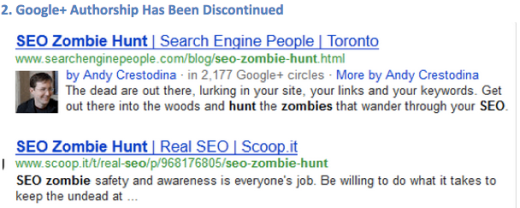
As of late August 2014, Google has stopped showing authorship markup in the SERPs. After many years of pushing authorship as the next great thing, its discontinuation came as a surprise to many in the search community, including myself. I even had to quickly release the 2nd, revised version of my book, “SEO Like I’m 5,” to reflect this information because the rel=authorship was such a big focus of SEO in 2014.
The writing was on the wall, however, beginning in December 2013 with Google reducing the number of author photos shown in the search results. Fast forward to June 2014, and author photos were completely dropped.
The official line is that authorship was discontinued due to low adoption rates, a move to unify desktop and mobile experience, and lack of significant impact on the search results.
Some technically challenged users felt the effort required to implement authorship properly on their site was too complicated. Other site owners saw no potential benefit and simply didn’t even bother. But, the bottom line, the users didn’t care much for Google+ author snippets on search engine pages.
3. Google+ Brand Posts Discontinued On Knowledge Graph Cards
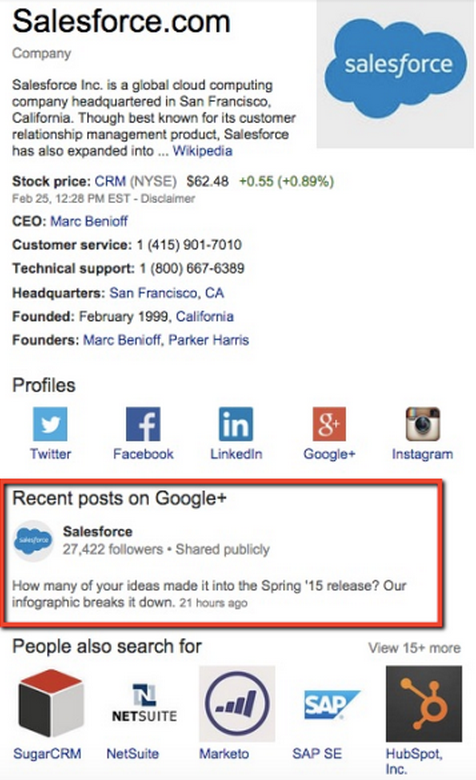
As of July 2015, brand posts will no longer be displayed in the Knowledge Graph Cards.
Previously, the Knowledge Cards had displayed Google+ posts of brands, but with the recent change, Google is viewing them the same as tweets.
So, viewing Google+ brand posts are now considered like any other social media updates and will appear in the traditional search results for more consistency overall.
4. Google Photos Breaks Up With Google+
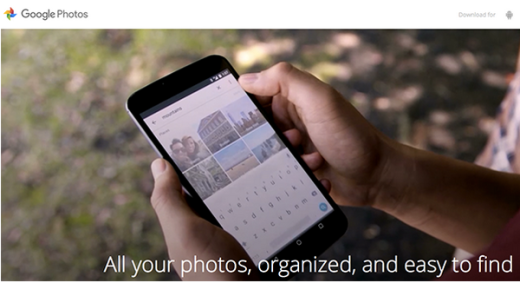
As of May 2015, people now have unlimited storage for photos and videos with Google Photos. This makes Google Photos on of the most appealing photo storage option currently available on the Web.
With the diminished new vision for Google+, the head honchos over at Google wanted to keep the option of photo storage available to online users.
So, Google decided to re-launch this powerful tool under Google Photos. A cool feature is the categorization tool. Instead of creating albums or tagging your photos, Google Photos automatically categorizes your photos into photo buckets. It has the capability to recognize faces, trees, flowers, birthday parties and more.
5. Sign-in Without a Google+ Profile Requirement
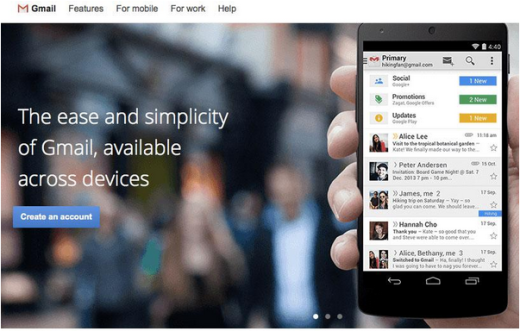
For the small business owner – or simply anyone – who wants to use Google’s social services, but doesn’t want to create a Google+ profile, you’re in luck.
It’s likely that very soon, all you’ll need is a Google or Gmail Account to share content, communicate with your contacts, create a YouTube channel and more.
In the past, to use these services meant you had to create a Google+ profile but this new change is quickly becoming one of most their popular changes, especially as it relates to eliminating the unpopular requirement to use Google+ when signing in into YouTube.
This move signals that Google is no longer willing to push everyone in the world to use its social network.
Google+ Is A Changin’
When looking at all the changes Google has made to their social media platform, you start to wonder if these changes make sense. Many of these changes have repositioned Google+ as a benefit as opposed to a heavy-handed push for a Google+ signup.
This leads us to wonder what the true intention is behind all these changes. Google is always tight-lip about it’s plans, but we can expect a new refocused Google+ in 2016.
Over to you – are you using Google+ to manage your company’s business information with Google? Any ideas on what they’re up to over at the GooglePlex with regards to Google+?
Read Next: 22 growth hackers to follow on Twitter
Image credit: Shutterstock
Get the TNW newsletter
Get the most important tech news in your inbox each week.




